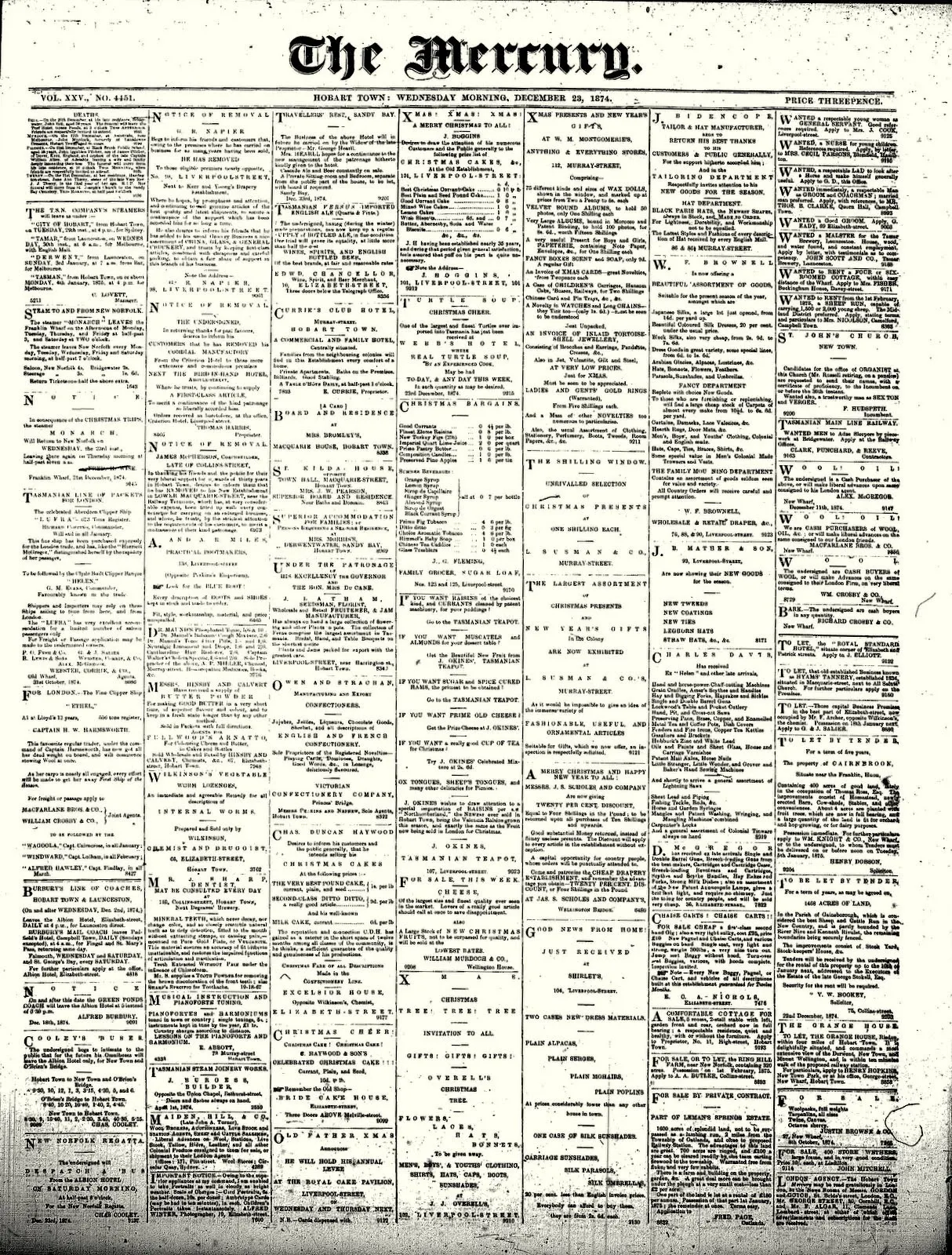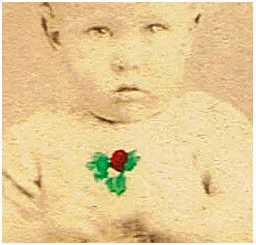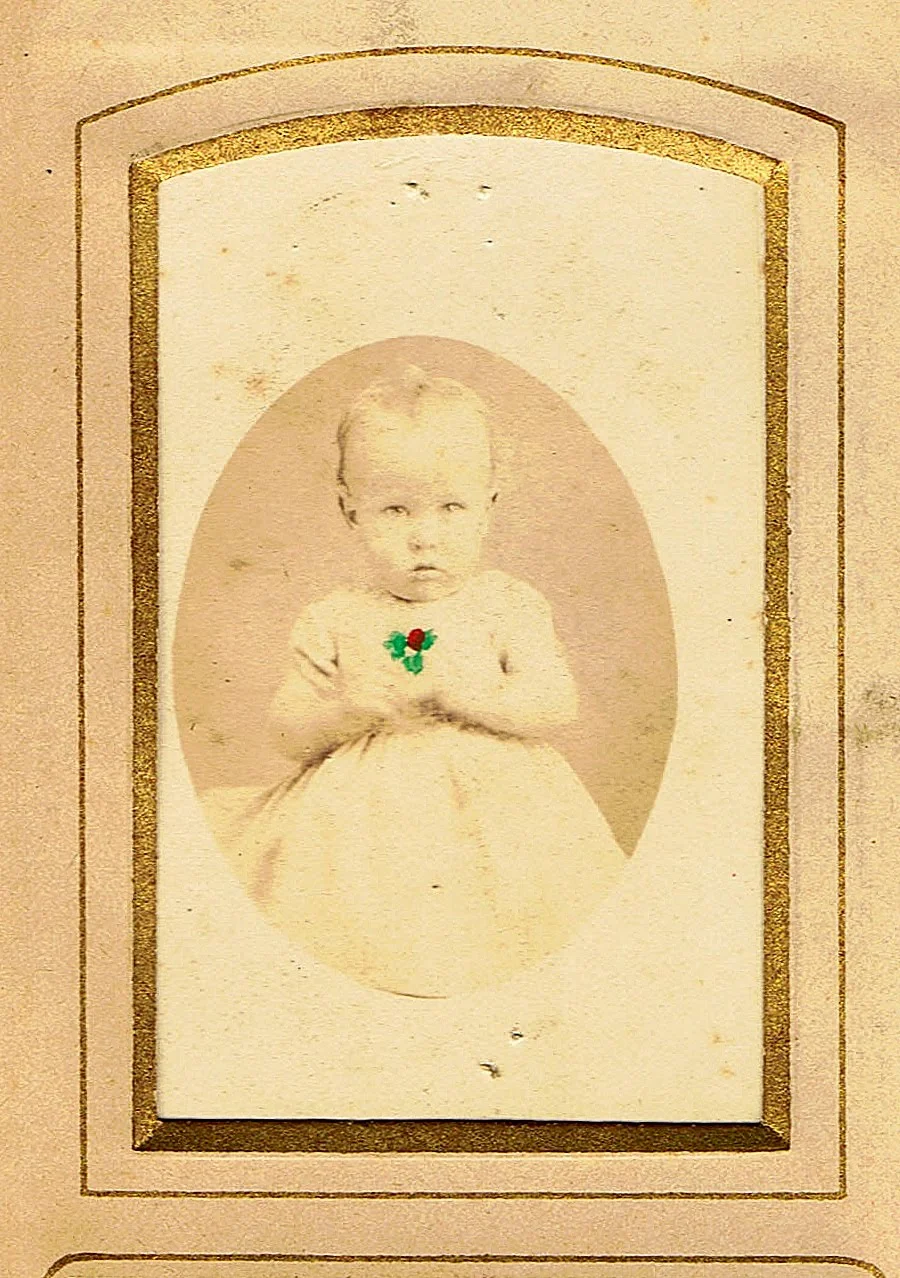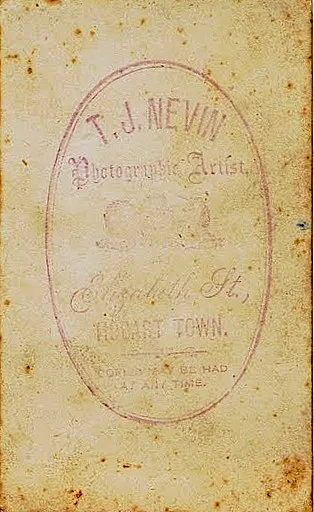THOMAS J. NEVIN at the HOBART TOWN HALL
ANIMAL ICONOGRAPHY
Acquisition of an emu by Thomas J. Nevin, while resident keeper at the Hobart Town Hall, was noted in the press, January 1878. Six months later, it died.
Mr Nevin has an emu in his yard at the Town Hall, keeping amicable company with the other domestic animals.Source: Tasmanian Evening Herald (Launceston, Tas. : 1878), Tuesday 29 January 1878, page 3
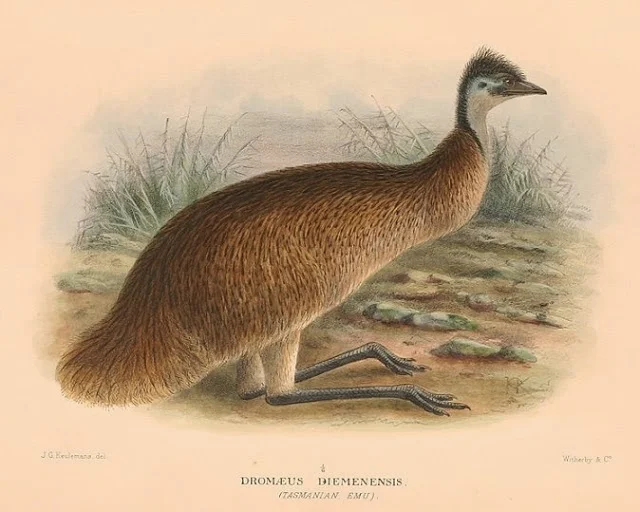
Hand coloured lithograph from The Birds of Australia (1910-28) by Gregory Macalister Mathews (1876-1949).
Artwork by John Gerrard Keulemans (1842-1912) a Danish bird illustrator.
How Thomas Nevin's emu died at the Hobart Town Hall
Was it the Dromaius novaehollandiae diemenensis? And if Nevin gave it to the Royal Society's Museum, now the Tasmanian Museum and Art Gallery, have they still got it?

Thomas Nevin's emu dies at the Town Hall,
The Mercury 22 July 1878
TRANSCRIPT
AN ORNITHOLOGICAL DISASTER.--This report appeared in the Mercury of 22 July 1878. Was it the Tasmanian Emu, the Dromaius novaehollandiae diemenensis, now extinct? Possibly, because the death of this emu was reported as an ornithological disaster, suggesting it may have been one of the few remaining of the species and rare enough to warrant its presentation to the Museum.
A young Emu the property of Mr. Nevin keeper of the Town Hall, came to an untimely end last week by being strangled in trying to force itself through the fence of the paddock in which it was kept at the rear of the Town Hall. The owner states his intention to present the Emu to the Royal Society's Museum.
The yard at rear when Thomas Nevin kept the emu is visible at right in this photo taken ca, 1878:

Town Hall & Public Library
Anson Bros Date: ca. 1878
Description: 1 photograph : sepia toned ; 105 X 180 mm.
Notes: View taken from the corner of Macquarie and Elizabeth Streets.
Location: W.L. Crowther Library
ADRI: AUTAS001127111730
Bounty for emu flesh
Reports of the Tasmanian emu's extinction in subsequent decades cited accounts of a bounty paid for its flesh to provision prisoners as the principal reason for its extermination, and dated its hybridisation with the introduction of the mainland Australian emu from 1845. Details were published in the ornithological magazine, The Emu, 1926:

The Emu, XXIII, p. 221: 1926: How Tasmania Lost The Emu.
Additional early accounts
*Dromaius novaehollandiae diemenensis + {sAustralia:Tas.Extinct.}
*Van Diemen's Land Cassowary Latham,1823, A general history of birds,8,p.384,pl.138.
*Dromiceius novaehollandiae diemenensis Mathews,1913, A List of the Birds of Australia,p.2.
*Dromiceius novaehollandiae gunni Mathews,1922, Austral Avian Record,4,p.175. New name for Dromaeus diemenensis Le Souef,1907.
*Dromiceius novæhollandiæ diemenensis Mathews,1927, Systema Avium Australasianarum,1,p.2.
*Dromiceus novaehollandiae diemenensis [as n.hollandiae] Peters,1931,Checklist of Birds of the World,1,p.10.
*Dromaius novaehollandiae diemenensis Mayr,1979,in Mayr & Cottrell (eds.),Checklist of the Birds of the World, 2nd ed.,1,p.10
Reports of this species' extinction today date the death of the last known emu in captivity ca. 1873, for example:
WIKIPEDIA
The Tasmanian emu was, as the mainland birds, hunted as a pest. In addition, the practice of setting fire to grassland and shrubland to aid in claiming land for agriculture deprived the birds of habitat. It is known that in 1838, 2 skin specimens were received by the British Museum. The subspecies became extinct around 1850, but this date is not very precise: Mainland birds were introduced after diemenensis' disappearance (and possibly even when the last birds of the Tasmanian subspecies were still around, hybridizing them out of existence), but the history of emu introductions on Tasmania is not sufficiently documented to allow a more precise dating of the disappearance of diemenensis. Whether a sight record in 1865 and captive specimens that died in 1873 were of this subspecies is not known with certainty. The specimens on the British Museum belonged to a collection which was suffering from bad preparation and/or storage in 1906 already, and they could not be located in 1959. A supposed third specimen in Frankfurt is erroneously attributed to this subspecies (Steinbacher, 1959).

Courtesy State Library of Tasmania
Title: Emu and young / by Louisa A. Meredith
Author: Meredith, Louisa Anne, 1812-1895
In:Tasmanian friends and foes : feathered, furred and finned P. 155
Publisher:London, Day & Son, 1880
Description:1 picture : b&w ; 17 x 11 cm.
Format: [picture] / Print
ADRI:AUTAS001126076652
Source: Tasmaniana Library
Notes: Footnote: Dromaius novaehollandiae
Exact measurements: 165 X 106 mm.
Studio Stamp Iconography
Competing symbologies in 19th century Tasmania used native animal iconography to underscore the imperative to nationalism, and reinvestments of traditional British animal iconography to herald the coming postcolonial State. Adrian Franklin expanded on this paradox in 2006:
" Although native animals were to be the new icons of Australian identity, part of the problematic nature of post-colonial cultures is precisely that they are neither colonial nor yet free from their colonial past. While Australia wanted to embrace indigenous animals and mantle itself with their authenticity and natural belonging, it was still tied in countless ways to its other animals ..."From: ANIMAL NATION The True Story of Animals and Australia, Adrian Franklin (UNSW Press 2006, p.108)
With movements such as the lobby to end transportation in 1853, and the later Acclimatisation Societies which organised the introduction of species and flora from Europe, the symbology of the colony vascillated between the traditional emblems of the British, and the new native fauna and flora. This medal, for example, pre-empted the official adoption of native fauna for statehood by 50 years:

Medal Source: State Library of Tasmania
Description: 1 medal : silver coloured metal ; diam. 58 cm.
Notes: This medal was struck to commemorate the end of transportation of convicts to Tasmania in 1853. 9000 white metal medals were struck, and 100 were produced in bronze for members of committees. One gold medal was presented to Queen Victoria., Obverse Head of a young Queen Victoria with the legend VICTORIA QUEEN above, and below, MDCCCLIII [1853] : Reverse Shield of arms below a rising sun supported by an emu and a kangaroo. Above the shield is CESSATION OF TRANSPORTATION 1853.


Left: Cover of a nationalistic song from 1860s with emu and kangaroo (SLTas)
Right: The 1868 Law Reform Act Tasmanian Government with British Royal Coat of Arms
This dual affiliation was also evident in Belfast-born Thomas J. Nevin's studio stamps: between 1868 and 1876 he used the official insignia of the Royal Coat of Arms with the lion and unicorn for important events in his life such as the government commission to document official records with photographs of prisoners at the Port Arthur prison and Hobart Gaol, and in his everyday studio portraiture, his most common commercial stamp featured a kangaroo looking back over its shoulder, beneath a Latin inscription: "AD ALTIORA" (To the Highest):
Verso of studio portrait by Nevin with kangaroo 1871 (Safier Collection)

Left: the weekly police gazette, produced for the Municipal Police Office, Town Hall
Right and below: Thomas Nevin's "mugshots" of prisoners with his stamp featuring the Royal Arms insignia printed on verso (Mitchell Library SLNSW).
The seal of the Supreme Court of Tasmania (Mitchell Library SLNSW)
The official stamp which Thomas Nevin printed on the verso of his photographs of Tasmanian convicts was the same as the insignia of the Supreme Court and Prisons Department where he photographed prisoners whose images survive today in public and private collections numbering more than 350 photographs.

Charles A. Woolley 42 Macquarie St. Hobart 1860-1870
Verso of unidentified man with top hat and cane.
Copyright © Private Collection KLW NFC ARR
This rare studio stamp from Charles A. Woolley carries the nationalistic exhortation "Advance Tasmania." His use of animal iconography differs again from his cohort's: his emu and kangaroo face outwards away from the coat of arms, unlike Alfred Winter's which face inwards in reverse positions.
When commercial photographer Alfred Winter relocated his business from Melbourne to Hobart ca. 1870, he changed the design of his studio stamp to include an emu and kangaroo. Although similar to the design used on the 1853 medal issued to commemorate the cessation of transportation of convicts to Tasmania, the positions of the emu and kangaroo were reversed on Winter's design. By 1884, however, he had replaced the emu and kangaroo with a lion and unicorn, encircled with the words " By Appointment to His Excellency The Governor". This example is the verso of a commercial portrait of a private patron, Anne Delaware (from The McCullagh Collection):


Left: Alfred Winter stamp 1874 with kangaroo and emu (SLVic)
Right: Alfred Winter stamp 1884 with lion and unicorn (Private Collection)


